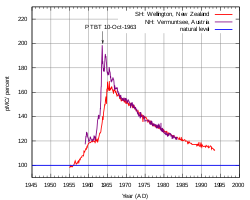Dating advances
These dating techniques are by no means perfect, but they are always improving, and they are the best methods that we have at this time. Ads help our organization grow to help people learn more and develop our site. Maintenance is not cheap. More help, more resources, more learning. We're so excited to continue to grow and support the parents and teachers championing children's education.
- speed dating events.
- How Does Radiocarbon Dating Work? | f.e-safety.com.ua;
- mbti matchmaking.
- Definition of Carbon Dating?
Once it dies, however, this exchange stops. In Hessel de Vries showed that the concentration of carbon in the atmosphere varies with time and locality. The relatively short-lived 14 C is constantly renewed by cosmic ray bombardment on atmospheric nitrogen.

Since the bombardment is slightly variable, and for other reasons, the 14 C taken into organic matter is also slightly variable. That leads to errors in the chronology. However, under about 20, years the results can be compared with dendrochronology , based on tree rings. For the most accurate work, variations are compensated by means of calibration curves.
The method was developed by Willard Libby and his colleagues at the University of Chicago in In , he was awarded the Nobel Prize in Chemistry for this work. Therefore, if we know the 14 C: Unfortunately, neither are straightforward to determine. The amount of 14 C in the atmosphere, and therefore in plants and animals, has not always been constant. For instance, the amount varies according to how many cosmic rays reach Earth.
How Does Carbon Dating Work
Luckily, we can measure these fluctuations in samples that are dated by other methods. Tree rings can be counted and their radiocarbon content measured. A huge amount of work is currently underway to extend and improve the calibration curve. In we could only calibrate radiocarbon dates until 26, years.
Dating history
Now the curve extends tentatively to 50, years. Radiocarbon dates are presented in two ways because of this complication. The uncalibrated date is given with the unit BP radiocarbon years before The calibrated date is also presented, either in BC or AD or with the unit calBP calibrated before present - before The second difficulty arises from the extremely low abundance of 14 C. Many labs now use an Accelerator Mass Spectrometer AMS , a machine that can detect and measure the presence of different isotopes, to count the individual 14 C atoms in a sample.
Australia has two machines dedicated to radiocarbon analysis, and they are out of reach for much of the developing world.
Radiocarbon Dating - Kids History
In addition, samples need to be thoroughly cleaned to remove carbon contamination from glues and soil before dating. This is particularly important for very old samples.
- list of free dating sites in france.
- History of Radiocarbon-14 Dating?
- free dating sites boston.
Because of this, radiocarbon chemists are continually developing new methods to more effectively clean materials. These new techniques can have a dramatic effect on chronologies. With the development of a new method of cleaning charcoal called ABOx-SC , Michael Bird helped to push back the date of arrival of the first humans in Australia by more than 10, years.
- Radiometric dating.
- What is Radiocarbon Dating??
- Radiocarbon dating.
- ihk speed dating gelsenkirchen 2020.
Moving away from techniques, the most exciting thing about radiocarbon is what it reveals about our past and the world we live in. Radiocarbon dating was the first method that allowed archaeologists to place what they found in chronological order without the need for written records or coins. In the 19th and early 20th century incredibly patient and careful archaeologists would link pottery and stone tools in different geographical areas by similarities in shape and patterning.